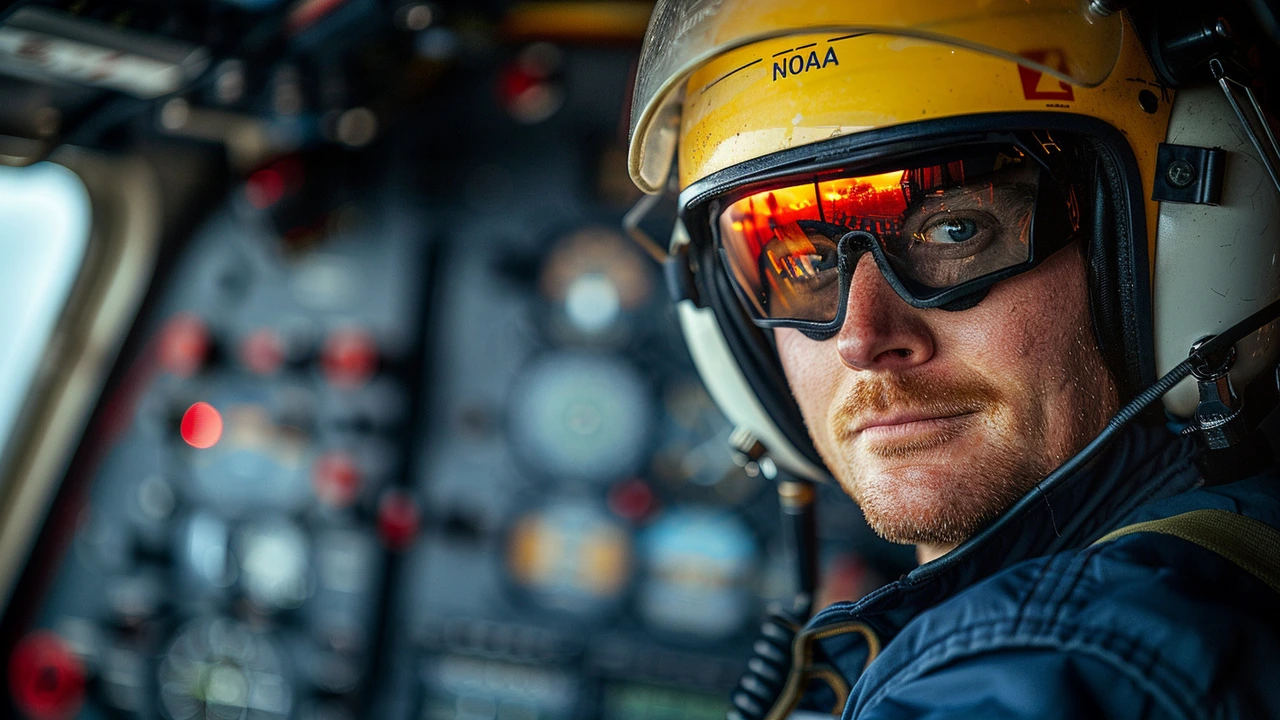The Crucial Role of NOAA Incident Meteorologists in Wildfire Management
When vast wildfires threaten landscapes and communities, the need for precise and timely weather forecasts becomes more vital than ever. This is where professionals like Robert Rickey step in. Rickey, a dedicated Incident Meteorologist (IMET) with the National Oceanic and Atmospheric Administration (NOAA), has a job that intertwines the complexities of meteorology with the urgent demands of firefighting.
Every year, wildfires across various terrains pose severe risks. However, thanks to the specialized work of IMETs like Rickey, firefighting teams have access to tailored weather forecasts essential for both planning and real-time decision-making. These meteorologists provide critical data on wind speed and direction, humidity levels, and other weather conditions that directly influence fire behaviors.
The Typical Day of a Fire Weather Forecaster
A typical day for Rickey starts with the analysis of detailed weather models and satellite imagery. His responsibility extends beyond the standard meteorological duties; he creates site-specific forecasts that predict how a fire will behave given the current and projected weather conditions. These reports are crucial, especially when gigantic blazes become capable of altering weather patterns, creating their self-sustaining systems that can escalate their ferocity.
Rickey’s role is pivotal when it comes to managed or 'prescribed' burns as well. These are intentional fires set by forest management teams to clear underbrush and deadwood, which can fuel larger, uncontrollable fires in the future. Predicting the perfect weather conditions necessary for these burns involves deep understanding and acute prediction skills to ensure the safety of both the fire management teams and the surrounding communities. His forecasts help determine the safest times to initiate these controlled burns.
Challenges in the Field of Fire Weather Forecasting
Being an IMET like Robert Rickey isn't without challenges. The necessity for reliable internet access to retrieve real-time data, manage complex weather prediction models, and communicate effectively with firefighting teams underscores the technical dependencies of the job. Moreover, deployments, which can last from several days to two weeks, require both physical and mental resilience. During these periods, Rickey might find himself in remote locations, where rapid changes in weather can drastically affect fire behavior and, consequently, the safety of entire operations.
In his reflections on the job, Rickey expresses a profound sense of fulfillment knowing that his work directly impacts the safety and efficiency of firefighting efforts across the nation. His forecasts not only guide the strategic approaches to contain massive wildfires but also ensure that communities are alerted in a timely manner, preserving lives and properties.
Job Satisfaction Amongst Challenges
Despite the demands and sporadic nature of his work, Rickey finds a deep sense of accomplishment in his role. The ability to provide critical weather information that can potentially save lives offers immense job satisfaction. This role involves a continuous learning process, where each fire and forecast provides new data and insights, contributing broadly to the field of environmental science and safety.
The efforts of IMETs like Robert Rickey and his colleagues are indispensable during wildfire seasons. Beyond their direct contributions, they also engage in educating communities and local fire departments about fire weather interactions, enhancing overall preparedness and response strategies toward these natural but hazardous occurrences.
The integral role of IMETs in wildfire management cannot be understated. As climate change continues to influence weather patterns globally, the insights and predictions provided by these specialized meteorologists will remain crucial in combating the ever-evolving challenge of wildfires.







Cara McKinzie
Thats the craziest sh!t they never talk about, my god.
Joseph Conlon
Let me break it down for anyone who thinks these so‑called “elite” fire weather forecasters are the only reason we keep the flames at bay. First, the models they rely on are built on assumptions that can be off by a mile when a storm kicks up out of nowhere, and yet we still hand them a golden badge. Second, the reality on the ground is that crews often ignore the minutiae of these forecasts because they’re dealing with life‑or‑death situations where split‑second decisions trump any spreadsheet. Third, the whole idea of a single meteorologist being a hero is a narrative sold to the public to make the science feel personal, but in truth it’s a team effort. Fourth, rain‑making drones and satellite feeds provide data so fast that a forecast written at 0800 can already be outdated by 0815. Fifth, we’ve seen cases where an IMET’s prediction of a wind shift actually contributed to a fire’s erratic behavior because crews were positioned based on that very prediction. Sixth, the media loves a good story about a lone forecaster battling the elements, but they rarely mention the countless hours of grunt work by analysts who never get a shout‑out. Seventh, the budget cuts in federal agencies mean that these forecasters are stretched thin, handling multiple incidents at once, which inevitably reduces the granularity of each forecast. Eighth, the public’s trust in these experts can create complacency; people think the forecast will protect them, ignoring basic fire safety. Ninth, climate change is already skewing historical data, so the baselines these forecasters use are becoming less reliable every season. Tenth, there’s a growing reliance on automated AI models that can flag dangerous conditions without a human in the loop, which some argue will eventually replace the need for a dedicated IMET. Eleventh, the emotional toll on these meteorologists is huge – they carry the weight of knowing a wrong call can cost lives, yet they’re rarely given mental health support. Twelfth, the training pipeline for incident meteorologists is rigorous, but the real‑world experience they need often comes from being thrown into chaotic situations with minimal mentorship. Thirteenth, their reports are often dense with jargon, making them inaccessible to the very firefighters who need clear, actionable information. Fourteenth, the push for transparency leads to public releases of raw model data, which can be misinterpreted by non‑experts and cause panic. Fifteenth, at the end of the day, while the work is commendable, we need to remember that no single forecaster can outsmart a wildfire that’s fed by dry fuels and fierce winds.
Mohit Singh
Honestly, the hype around these “elite” forecasters feels like a distraction from the real issue: we’re still letting forests burn unchecked until it’s too late. The constant praise masks the fact that many of these predictions are just educated guesses blown out of proportion. It’s frustrating watching headlines glorify a single name while the systemic problems stay buried. We need more accountability, not just applause.
Damian Liszkiewicz
It’s understandable to feel that way, but consider how each forecast, even if not perfect, adds a layer of safety for crews on the ground. Think of it as a collective mind‑map where every data point, no matter how small, helps plot a safer path. 🌲✨ The dedication of these meteorologists, combined with community education, builds resilience over time. Let’s keep supporting the blend of tech and human insight – together we can turn those sparks into lessons rather than catastrophes.
Angela Arribas
While passion is appreciated, the phrasing here contains several grammatical errors that undermine credibility. Please ensure proper punctuation and avoid colloquial shortcuts when discussing professional work.